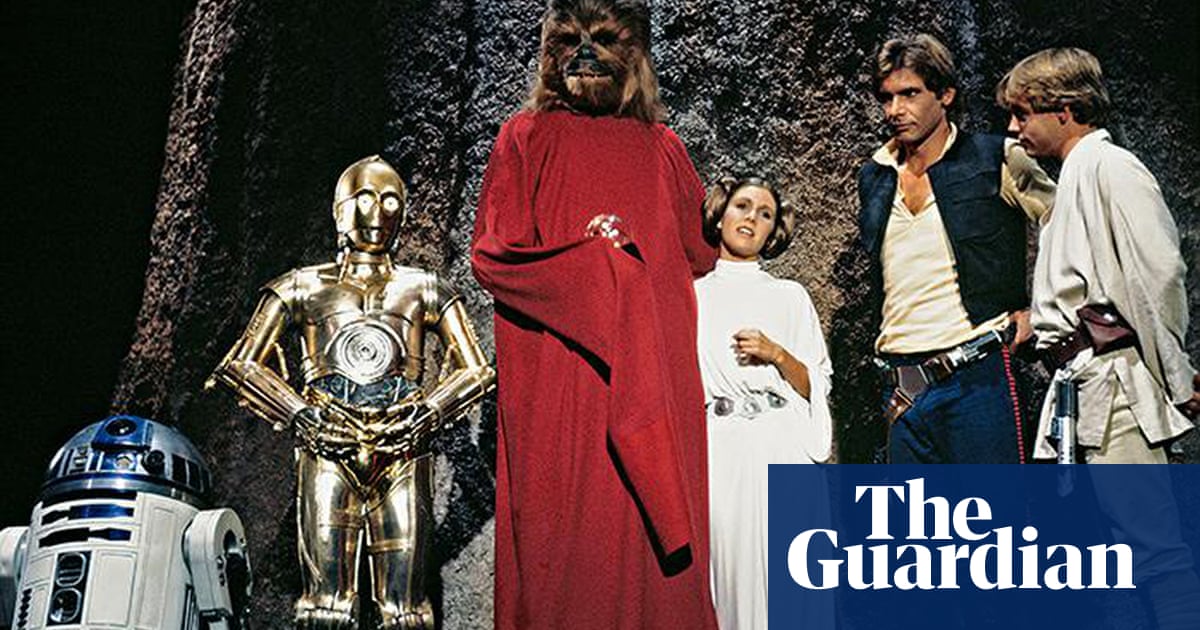
I
If there is a more well-known example of human foolishness than the Star Wars Holiday Special, it has yet to be found. The two-hour television program from 1978 featured Mark Hamill as Luke Skywalker, Harrison Ford as Han Solo, and Carrie Fisher as Princess Leia traveling to Kashyyyk, the Wookiee home planet, to celebrate something called “Life Day.” It is widely regarded as one of the worst forms of entertainment ever put on film and has never been aired again. In fact, George Lucas once stated that he would personally destroy any illegally made copies of the special if given the opportunity.
The costumes are inexpensive, the makeup even more so (Hamill has a lot of it on, making him look like he just finished performing as a pantomime dame), there is no one in charge of the script, and for the first 15 minutes, there is no script at all. Chewbacca’s family spends their time grunting in their Wookiee home with no subtitles. Everyone involved in the original Star Wars film from 1977 appears to dread being on set. James Earl Jones is lucky that he only had to provide his voice for Darth Vader. The only ones who seem to fully embrace the dullness of it all are now-forgotten stars from 70s variety shows, such as Harvey Korman and Art Carney.
There is speculation that Carrie Fisher was under the influence of cocaine when she performed the final song celebrating Life Day to the main theme of Star Wars. One can only hope this is true for her sake. The special also includes a cringe-worthy scene where Chewie’s father, Itchy, watches VR pornography featuring singer Diahann Carroll professing her attraction to him. While the special did feature the first appearance of popular bounty hunter Boba Fett in an animated segment, it fails to make up for the overall poor quality of the remaining 110 minutes.
It simply makes no sense that George Lucas would have allowed a blockbuster and cultural event such as Star Wars to be followed by something so preposterously bad. And so a new documentary, A Disturbance in the Force, has done its best to unpack what happened in the late 70s to allow this monstrosity to actually screen in the US. It’s a fascinating watch, even if it fails to explain why nobody intervened to stop the special almost ruining the long-running space opera before it could hit the jump to light speed.
Jeremy Coon and Steve Kozak’s film highlights a key realization that was evident in 1978 – despite Star Wars’ groundbreaking success in ushering in the blockbuster era (with respect to Steven Spielberg’s Jaws), creator George Lucas seemed to have little understanding of the impact of his creation. He either did not realize or was not aware that allowing inexperienced television writers to contribute to his meticulously crafted galaxy could result in disastrous consequences. The hiring of comedians like Bruce Vilanch to write cheesy jokes, without any understanding of the franchise, and the involvement of Ken and Mitzie Welch, who were unfamiliar with sci-fi, in editing the final cut of the special, further emphasizes this lack of understanding. In fact, Lucas was so worried about the possibility of Star Wars being forgotten by audiences before the release of the highly anticipated The Empire Strikes Back in 1980, that he was willing to let others take charge of the creative aspects while he focused on generating buzz.
In the 1970s, variety shows that were once popular were now declining and were used as part of the marketing strategy for new movies. Even Star Wars characters, such as stormtroopers and Mark Hamill, appeared on shows like Donny & Marie and Bob Hope’s show, fully dressed in costume. Other celebrities like Richard Pryor also got to be part of the Star Wars universe, with C-3PO and R2-D2 even advertising for Burger Chef. It seemed that nothing was off-limits, so it made sense to have a holiday-themed variety special to boost toy sales during Christmas.
Someone should have intervened earlier to prevent the disaster that is the Star Wars Holiday Special, but no one did. If you have seen it, you have my sympathy. It is a cultural travesty that surpasses the notion of “so bad, it’s good” and delves into a frightening realm of subpar nonsense. It serves as a two-hour commercial for the importance of major studio quality control, which thankfully means that these days the most we are likely to endure in terms of Star Wars on television is a rerun of The Phantom Menace.
If you ever feel uncomfortable with the problematic portrayal of race in the prequels or the scene where Anakin attempts to feed Padme a floating pear, keep in mind that things were much worse in the 1970s.
Source: theguardian.com



















